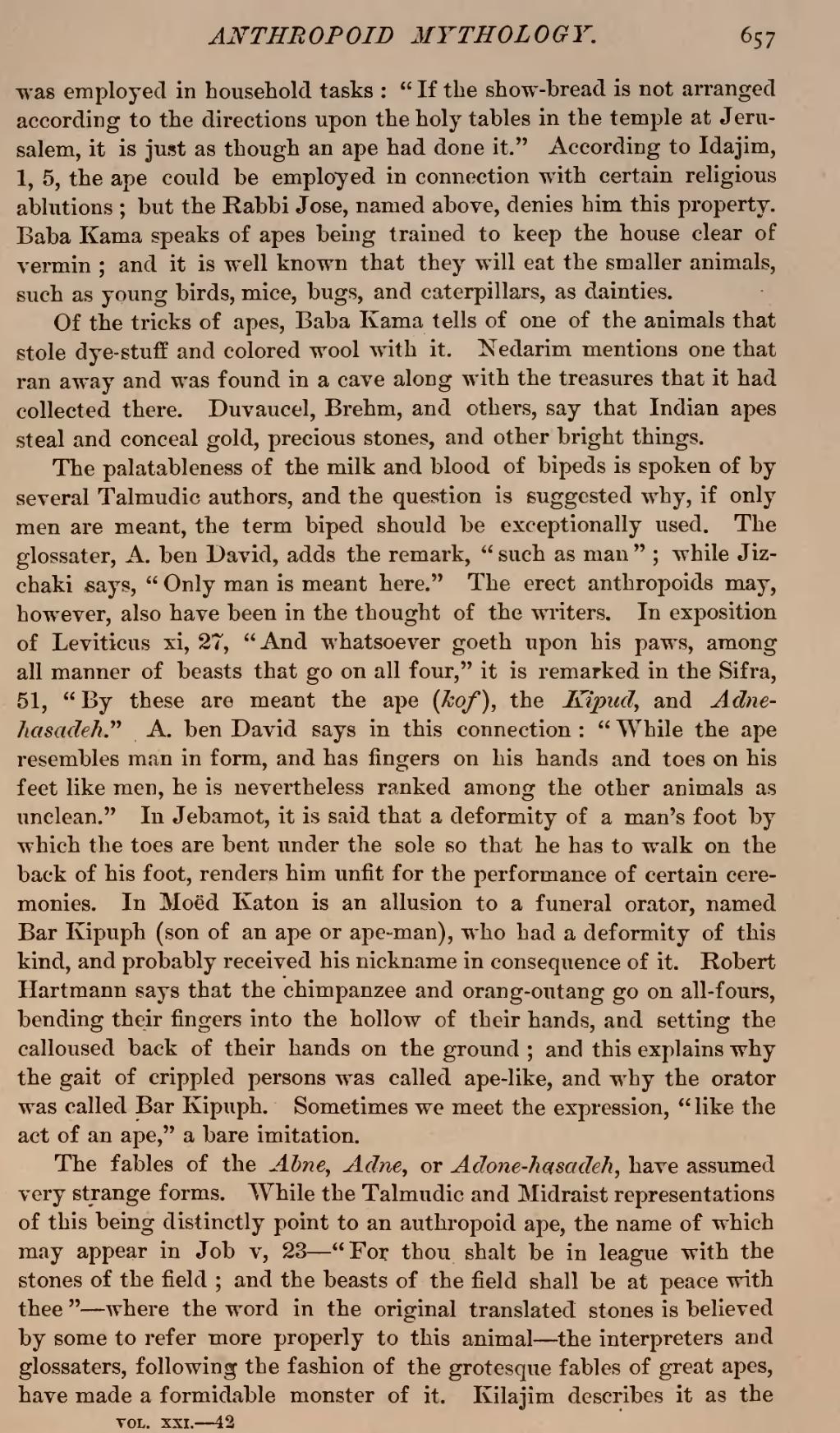was employed in household tasks: "If the show-bread is not arranged according to the directions upon the holy tables in the temple at Jerusalem, it is just as though an ape had done it." According to Idajim, 1, 5, the ape could be employed in connection with certain religious ablutions; but the Rabbi Jose, named above, denies him this property. Baba Kama speaks of apes being trained to keep the house clear of vermin; and it is well known that they will eat the smaller animals, such as young birds, mice, bugs, and caterpillars, as dainties.
Of the tricks of apes, Baba Kama tells of one of the animals that stole dye-stuff and colored wool with it. Nedarim mentions one that ran away and was found in a cave along with the treasures that it had collected there. Duvaucel, Brehm, and others, say that Indian apes steal and conceal gold, precious stones, and other bright things.
The palatableness of the milk and blood of bipeds is spoken of by several Talmudic authors, and the question is suggested why, if only men are meant, the term biped should be exceptionally used. The glossater, A. ben David, adds the remark, "such as man"; while Jizchaki says, "Only man is meant here." The erect anthropoids may, however, also have been in the thought of the writers. In exposition of Leviticus xi, 27, "And whatsoever goeth upon his paws, among all manner of beasts that go on all four," it is remarked in the Sifra, 51, "By these are meant the ape (kof), the Kipud, and Adne-hasadeh." A. ben David says in this connection: while the ape resembles man in form, and has fingers on his hands and toes on his feet like men, he is nevertheless ranked among the other animals as unclean." In Jebamot, it is said that a deformity of a man's foot by which the toes are bent under the sole so that he has to walk on the back of his foot, renders him unfit for the performance of certain ceremonies. In Moëd Katon is an allusion to a funeral orator, named Bar Kipuph (son of an ape or ape-man), who had a deformity of this kind, and probably received his nickname in consequence of it. Robert Hartmann says that the chimpanzee and orang-outang go on all-fours, bending their fingers into the hollow of their hands, and setting the calloused back of their hands on the ground; and this explains why the gait of crippled persons was called ape-like, and why the orator was called Bar Kipuph. Sometimes we meet the expression, "like the act of an ape," a bare imitation.
The fables of the Abne, Adne, or Adone-hasadeh, have assumed very strange forms. While the Talmudic and Midraist representations of this being distinctly point to an anthropoid ape, the name of which may appear in Job v, 23—"For thou shalt be in league with the stones of the field; and the beasts of the field shall be at peace with thee"—where the word in the original translated stones is believed by some to refer more properly to this animal—the interpreters and glossaters, following the fashion of the grotesque fables of great apes, have made a formidable monster of it. Kilajim describes it as the

